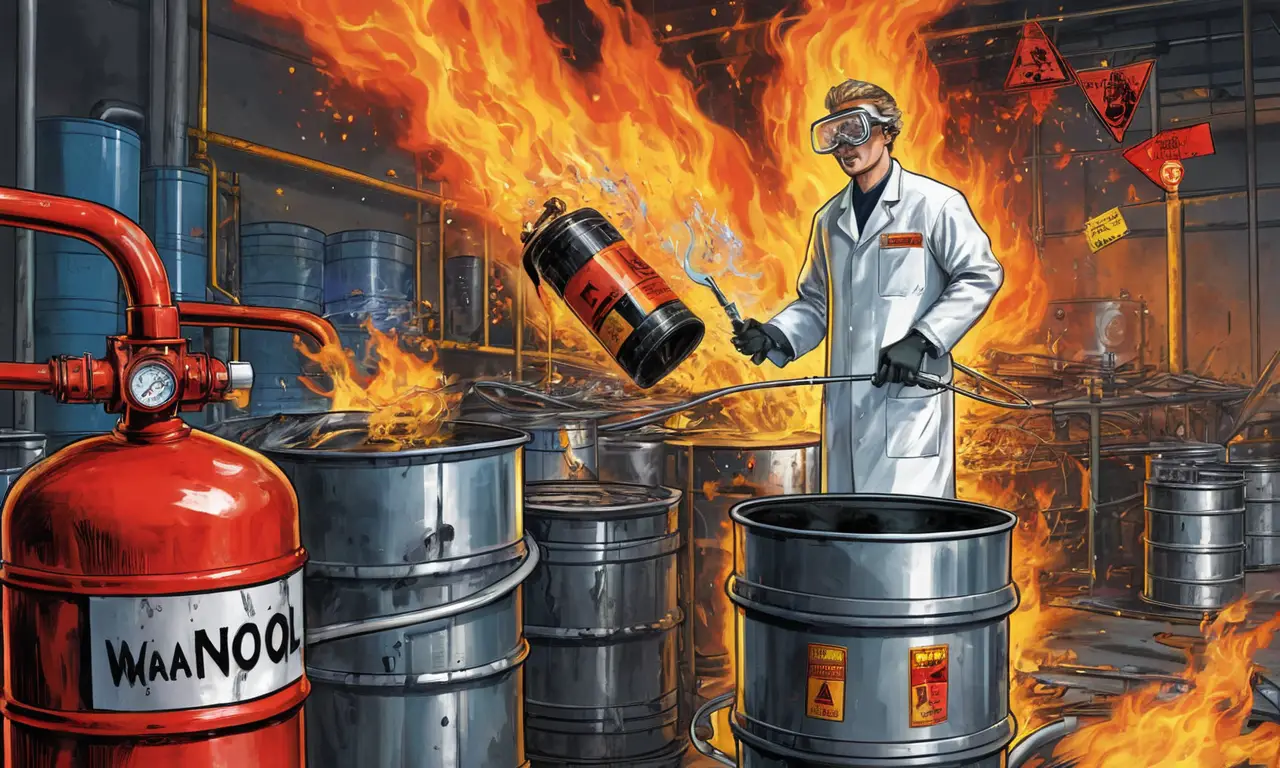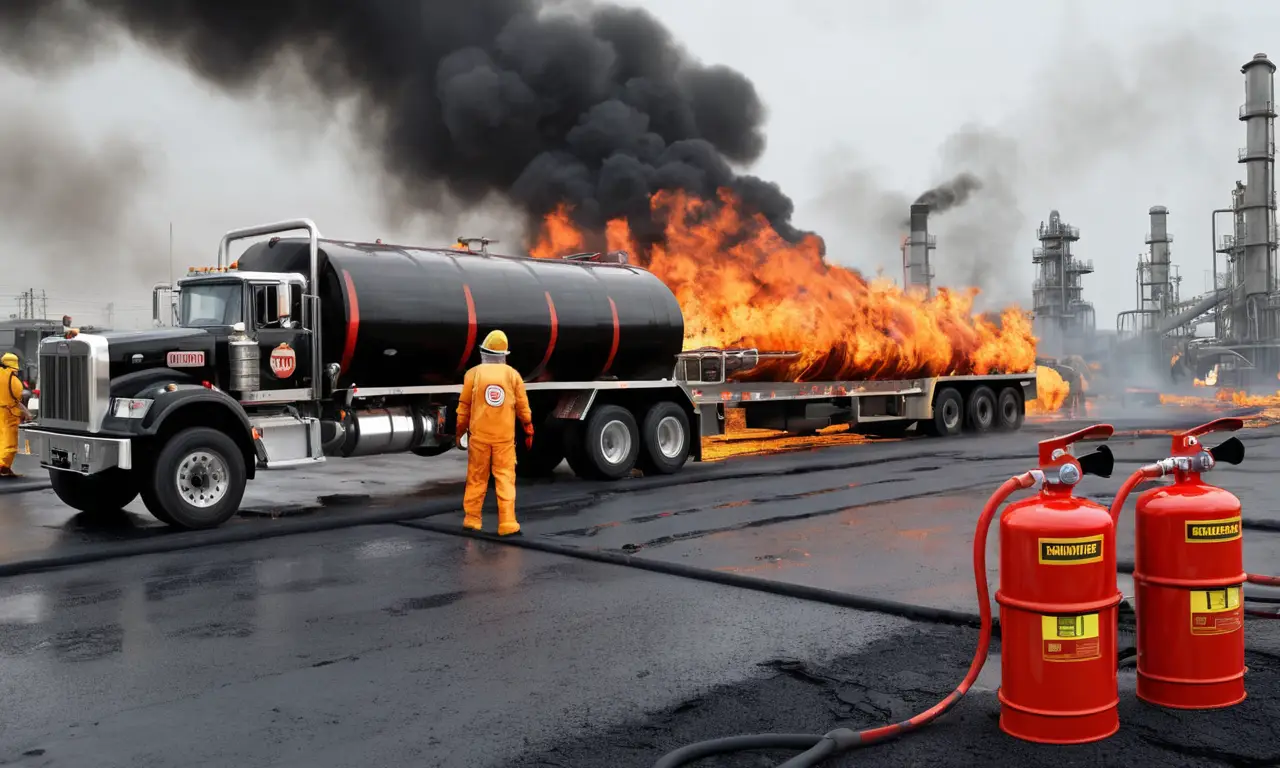
Crude oil, a vital resource powering our modern world, is also a highly flammable substance. Its inherent properties make it susceptible to ignition and combustion, posing significant risks during extraction, transportation, refining, and even everyday use. Understanding the nature of how flammable is crude oil is paramount for ensuring safety and preventing potentially devastating fires and explosions. This article delves into the flammability characteristics of crude oil, exploring its flash point, volatility, flammability range, fire hazards, and essential safety precautions for handling this volatile resource responsibly.
This comprehensive guide will provide a detailed analysis of how flammable is crude oil, outlining the factors contributing to its flammability and emphasizing the importance of stringent safety measures. We’ll examine the scientific principles behind crude oil combustion, discuss the potential consequences of fires involving crude oil, and offer practical advice on mitigating risks associated with this essential but hazardous substance.
Crude Oil Flammability
Crude oil is a complex mixture of hydrocarbons, primarily composed of alkanes, cycloalkanes, and aromatic compounds. These hydrocarbons are organic molecules containing hydrogen and carbon atoms, arranged in various chains and rings. The specific composition of crude oil varies depending on its geographical origin and geological formation. However, the fundamental chemical structure of hydrocarbons contributes to their flammability.
Hydrocarbons readily react with oxygen in the presence of an ignition source, releasing energy in the form of heat and light. This combustion process is exothermic, meaning it releases heat into the surroundings. The ease with which a hydrocarbon ignites depends on several factors, including its molecular structure, temperature, and the concentration of oxygen present.
Flash Point & Volatility

The flash point of a liquid is the lowest temperature at which its vapor can ignite when exposed to an ignition source. For crude oil, the flash point typically ranges from 35°C (95°F) to 100°C (212°F), depending on its specific composition and refining process. This relatively low flash point indicates that crude oil vapors can easily ignite at ambient temperatures, posing a significant fire hazard.
Volatility refers to the tendency of a liquid to evaporate into a vapor. Crude oil exhibits high volatility due to the presence of lighter hydrocarbons with lower boiling points. These volatile components readily escape into the air, forming flammable vapors that can travel considerable distances and accumulate in enclosed spaces.
Flammability Range
The flammability range of a substance is the concentration of its vapor in air within which it can ignite and burn. For crude oil, the flammability range typically spans from 1% to 6% by volume. This means that if the concentration of crude oil vapors in the air falls within this range, even a small spark or flame can ignite a fire.
The lower limit of flammability represents the minimum vapor concentration required for ignition, while the upper limit indicates the maximum concentration beyond which combustion becomes difficult due to oxygen depletion. Understanding the flammability range of crude oil is crucial for establishing safe operating procedures and preventing fires in storage tanks, pipelines, and processing facilities.
Fire Hazards of Crude Oil

Crude oil fires pose significant risks to human life, property, and the environment. The intense heat generated by crude oil combustion can cause severe burns, structural damage, and widespread destruction. Additionally, crude oil fires release toxic fumes and pollutants into the atmosphere, posing health hazards and contributing to air pollution.
The volatility of crude oil vapors also increases the risk of explosions. If a flammable vapor cloud is ignited, it can rapidly expand and detonate with tremendous force, causing significant damage and casualties. Crude oil spills can further exacerbate fire hazards by creating large pools of flammable liquid that are susceptible to ignition.
Safety Precautions for Handling Crude Oil
Handling crude oil safely requires strict adherence to established safety protocols and the use of appropriate personal protective equipment (PPE).
Storage & Transportation
- Store crude oil in approved containers designed for flammable liquids, ensuring proper ventilation and grounding to prevent static electricity buildup.
- Transport crude oil in dedicated tankers or pipelines equipped with safety features such as pressure relief valves and emergency shutdown systems.
- Regularly inspect storage tanks and transportation vehicles for leaks, corrosion, or damage that could compromise their integrity.
Handling & Processing
- Use explosion-proof electrical equipment and lighting in areas where crude oil is handled or processed.
- Implement strict no-smoking policies and prohibit open flames near crude oil storage or processing facilities.
- Train personnel on safe handling procedures, including the use of PPE such as gloves, goggles, and respirators.
Emergency Response
- Develop and implement comprehensive emergency response plans for crude oil fires or spills.
- Equip facilities with fire suppression systems, spill containment booms, and other necessary equipment.
- Conduct regular drills to ensure personnel are familiar with emergency procedures and can respond effectively in a crisis.
Conclusion
Crude oil’s inherent flammability necessitates stringent safety measures throughout its lifecycle. Understanding the factors contributing to how flammable is crude oil, including its flash point, volatility, flammability range, and fire hazards, is crucial for preventing catastrophic incidents. By implementing robust safety protocols, utilizing appropriate PPE, and conducting regular training and drills, we can mitigate the risks associated with handling this vital but hazardous resource responsibly.
